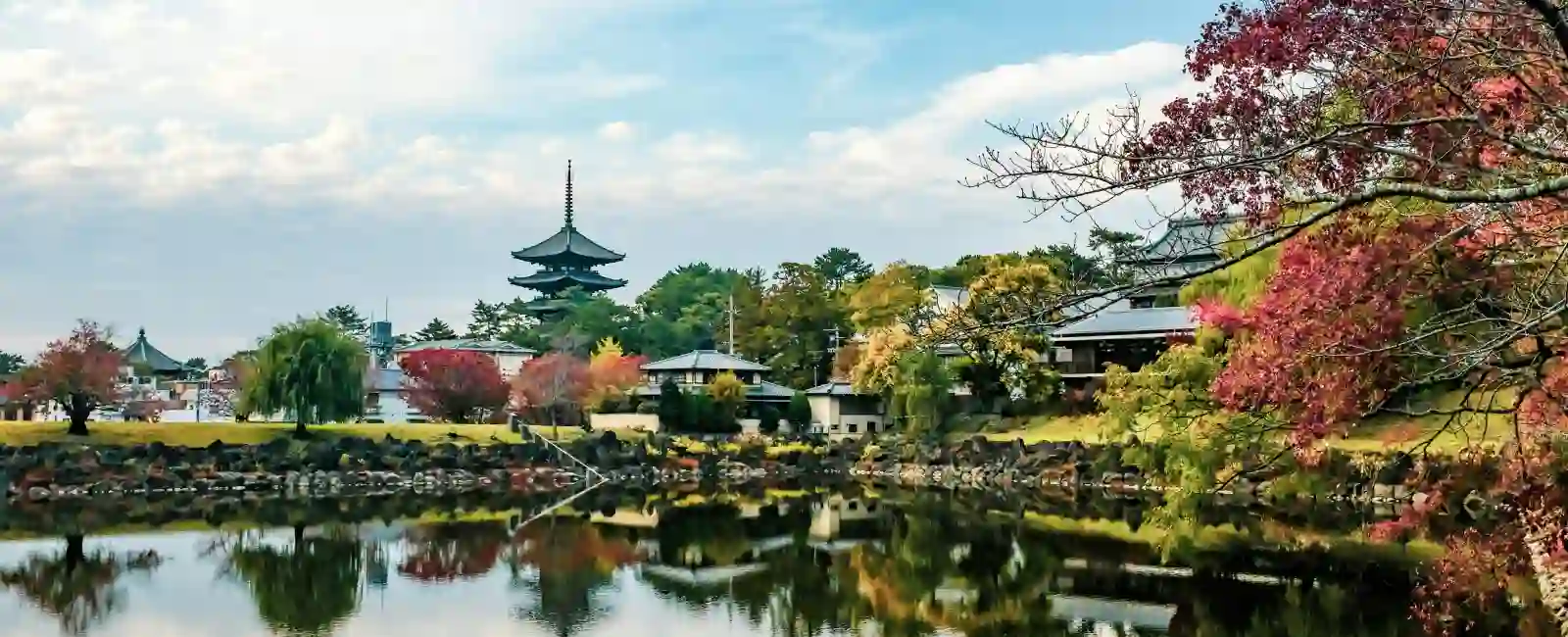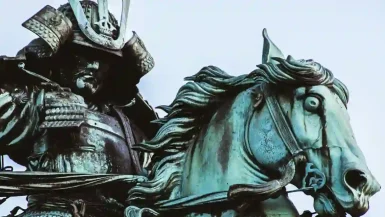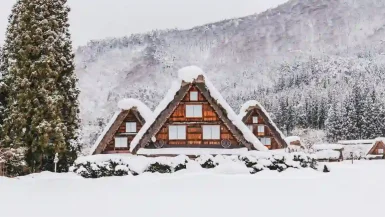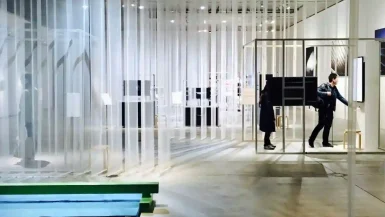Nara, Japan, holds a special place in the heart of the nation’s history. As the first permanent capital, it is a city steeped in rich cultural heritage and ancient traditions. Located in the Kansai region, Nara is often overshadowed by its more famous neighbors, Kyoto and Osaka. However, this charming city deserves a spot on your travel itinerary. Exploring Nara offers a unique blend of historical significance, natural beauty, and spiritual depth.
A Brief History of Nara
Nara’s history dates back to the 8th century, when it served as Japan’s first permanent capital from 710 to 794 AD. This period, known as the Nara Period, was crucial in shaping the country’s political and cultural landscape. During this time, Buddhism took root in Japan, and many of the temples and shrines you see today were established. These ancient structures not only reflect the architectural prowess of the time but also serve as a testament to Nara’s influence on Japanese culture. The city’s layout, inspired by the Tang Dynasty capital of Chang’an (modern-day Xi’an), showcases a grid pattern that was revolutionary for its time. The streets of Nara still echo with stories from this era, making it a living museum of Japan’s past.
Getting to Nara
Reaching Nara is convenient, whether you are coming from Kyoto or Osaka. The city is well-connected by Japan’s efficient rail system, making it an easy day trip from either city. If you’re traveling from Kyoto, the JR Nara Line provides a direct connection, with the journey taking about 45 minutes. From Osaka, the trip is even shorter, with the Kintetsu Nara Line offering a 30-minute ride. Upon arrival at Nara Station, you’ll find that the city’s main attractions are within walking distance or a short bus ride away. Exploring Nara becomes effortless with this level of accessibility, allowing you to maximize your time and fully enjoy the city’s treasures.
Top Attractions in Nara
Nara is home to a wealth of attractions, each offering a glimpse into the city’s rich cultural and spiritual heritage. Here are some must-visit sites that should be on every traveler’s list:
Todai-ji Temple: The Great Buddha Hall
Todai-ji Temple is undoubtedly the most iconic landmark in Nara. This massive temple complex, originally built in 752 AD, houses the world’s largest bronze statue of Buddha, known as Daibutsu. The sheer scale of the statue, standing at 15 meters tall, is awe-inspiring and serves as a symbol of Japan’s deep connection to Buddhism. As you enter the temple grounds, you’ll pass through the Nandaimon Gate, guarded by two towering Nio statues. These fearsome guardians embody the temple’s rich history and spiritual significance. Inside the Daibutsu-den (Great Buddha Hall), you’ll not only marvel at the statue itself but also at the intricate wooden architecture that surrounds it. This hall is one of the largest wooden structures in the world, despite being rebuilt several times over the centuries due to fires.
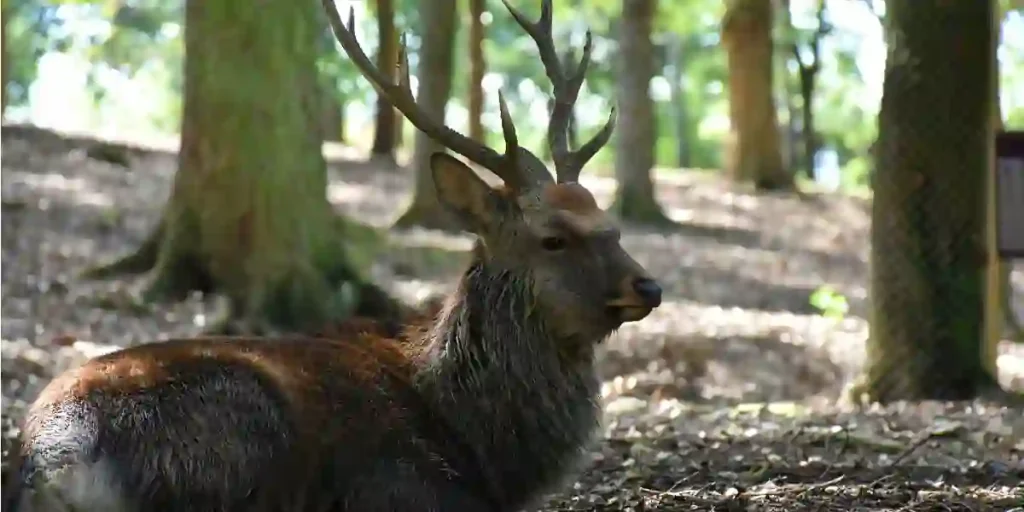
Nara Park: Where Deer Roam Freely
Nara Park is perhaps one of the most famous attractions in the city, and for good reason. Spanning over 500 hectares, this park is home to more than 1,000 freely roaming deer, considered sacred messengers of the gods according to Shinto beliefs. Exploring Nara, visitors can purchase special deer crackers, known as shika senbei, to feed these gentle creatures. The deer in Nara Park are incredibly friendly and have even learned to bow to visitors in exchange for a treat. However, it’s important to remember that these are still wild animals, so approaching them with respect is key. The park itself is a beautiful place to explore, with pathways leading to various temples, shrines, and scenic spots. It’s not uncommon to find deer lounging near these historic sites, adding a unique charm to your visit.
Kasuga Taisha: The Lantern-Lit Shrine
Kasuga Taisha is another must-visit site in Nara, known for its thousands of bronze and stone lanterns that line the paths leading to the shrine. Exploring Nara, you’ll find that this Shinto shrine, established in 768 AD, is dedicated to the deity responsible for protecting the city. The lanterns, donated by worshippers over the centuries, are lit twice a year during the Mantoro festivals in February and August, creating a magical atmosphere. As you approach the main shrine, you’ll notice the vibrant vermilion pillars and intricate woodwork that characterize traditional Shinto architecture. Inside, the shrine is divided into multiple smaller shrines, each dedicated to a different deity. The surrounding forest, known as Kasugayama Primeval Forest, is also a UNESCO World Heritage Site and offers peaceful hiking trails for those looking to connect with nature.
Kofuku-ji Temple: A Historic Treasure
Exploring Nara, Kofuku-ji Temple is one of Nara’s oldest and most significant temples. Originally founded in 710 AD, it was once one of the Seven Great Temples of Nara. The temple complex includes several buildings, but the five-story pagoda is the most recognizable. Standing at 50 meters tall, this pagoda is the second tallest in Japan and is a symbol of Nara’s historical significance. The pagoda, along with the adjacent three-story pagoda, creates a striking silhouette against the skyline. Inside the temple’s Treasure Hall, you’ll find an impressive collection of Buddhist art and artifacts, including statues, paintings, and relics that date back to the Nara Period. A visit to Kofuku-ji offers a deeper understanding of Nara’s role in the spread of Buddhism across Japan.
Isuien Garden: A Tranquil Retreat
For those seeking a moment of tranquility, Isuien Garden provides the perfect escape. This traditional Japanese garden, located near Todai-ji Temple, is divided into two sections: the front garden, which dates back to the Edo Period, and the rear garden, created in the Meiji Period. The garden is designed around the concept of “borrowed scenery,” where the surrounding landscape is incorporated into the garden’s design. As you stroll through the meticulously landscaped grounds, you’ll encounter serene ponds, stone lanterns, and carefully pruned trees that create a harmonious balance with nature.
Naramachi: A Glimpse into Edo-Era Japan
Naramachi, the former merchant district of Nara, offers a fascinating glimpse into life during the Edo Period. This well-preserved area is characterized by its narrow streets, traditional machiya houses, and charming atmosphere. Many of these historic buildings have been converted into museums, shops, and cafes, allowing visitors to experience the area’s rich history firsthand. While exploring Nara, one of the highlights of Naramachi is the Naramachi Koshi-no-Ie, a restored merchant house that provides insight into the daily life of Edo-era residents. As you explore Naramachi, you’ll also come across unique local shops selling traditional crafts, such as calligraphy brushes, pottery, and textiles. The district’s quiet streets and historic charm make it a perfect place to unwind and take a step back in time.
Cultural Experiences in Nara
Beyond its historical sites, exploring Nara offers a variety of cultural experiences that allow visitors to engage with Japan’s traditions and customs. These experiences provide a deeper connection to the local culture and enhance your understanding of Nara’s significance. From traditional tea ceremonies to local festivals, each activity enriches your visit and helps you appreciate the city’s unique heritage.
Tea Ceremony: Embrace the Art of Japanese Hospitality
Participating in a traditional tea ceremony is a must-do activity in Nara. This centuries-old ritual, known as chanoyu, is more than just drinking tea; it’s a spiritual experience that embodies the principles of harmony, respect, purity, and tranquility. In Nara, several tea houses offer tea ceremony experiences where you can learn about the customs and etiquette involved.
Kimono Experience: Dress in Traditional Japanese Attire
One of the most memorable ways to immerse yourself in Japanese culture is by wearing a kimono. In Nara, several rental shops offer the opportunity to dress in this traditional attire, complete with obi (belt) and accessories. After getting dressed, you can stroll through the historic streets of Naramachi or visit the temples and shrines, where you’ll feel as though you’ve stepped back in time.
Calligraphy Workshop: Learn the Art of Japanese Writing
Calligraphy, or shodo, is an ancient art form that has been practiced in Japan for centuries. In Nara, you can take part in a calligraphy workshop where you’ll learn the basics of this beautiful writing style. Guided by a skilled instructor, you’ll practice writing kanji characters using traditional brushes and ink. The workshop offers insight into the importance of balance, rhythm, and flow in creating each stroke. As you create your own calligraphy piece, you’ll gain a deeper appreciation for the precision and artistry involved in this timeless tradition.
Seasonal Highlights in Nara
Nara is a city that changes with the seasons, offering different experiences throughout the year. Each season brings its own beauty, making Nara a year-round destination.
Cherry Blossom Season: Nara’s Pink Wonderland
Spring in Nara is a breathtaking experience, particularly during cherry blossom season, which typically occurs from late March to early April. The city’s parks and temple grounds transform into a pink wonderland as cherry blossoms, known as sakura, bloom in abundance. Nara Park is a popular spot for hanami, the traditional practice of picnicking under cherry blossom trees. As you stroll through the park, you’ll encounter families and friends gathered to enjoy the fleeting beauty of the blossoms. The reflection of the sakura in the park’s ponds adds an ethereal quality to the landscape. Additionally, temples such as Todai-ji and Kofuku-ji are surrounded by cherry trees, creating a picturesque setting that’s perfect for photography. The sight of sakura petals gently falling in the breeze is a moment of serenity you’ll cherish.
Autumn Foliage: A Tapestry of Red and Gold
Autumn in Nara, from late October to early December, brings a stunning display of fall foliage. The city’s many parks, gardens, and temple grounds become a tapestry of red, orange, and gold as the leaves change color. One of the best places to experience autumn in Nara is Mount Wakakusa, where you can hike to the summit for panoramic views of the city surrounded by vibrant foliage. The contrast between the red maple leaves and the traditional architecture of temples like Kasuga Taisha creates a breathtaking scene. Another highlight of autumn in Nara is the annual Wakakusa Yamayaki, where the grass on Mount Wakakusa is set ablaze, illuminating the night sky in a spectacular display.
Summer Festivals: Celebrate Under the Stars
Summer in Nara is marked by lively festivals that bring the community together and showcase the city’s cultural heritage. One of the most significant events is the Nara To-kae, a lantern festival held in early August. During this festival, thousands of lanterns light up Nara Park, creating a magical atmosphere as visitors walk among the illuminated paths. The festival’s origins trace back to the Nara Period when lanterns were lit to honor the spirits of ancestors. Another summer highlight is the Deer Horn Cutting Ceremony, or “Shika-no-Tsuno-kiri,” held in October. This traditional event involves the ceremonial cutting of the antlers of male deer in Nara Park, a practice that dates back over 300 years.
Winter in Nara: A Peaceful Retreat
Winter in Nara, from December to February, offers a quieter, more peaceful experience. The city’s temples and parks are less crowded, allowing for a more introspective visit. While snowfall is rare, when it does occur, Nara transforms into a winter wonderland. The sight of snow-covered temples and deer wandering through the park is a serene and enchanting scene. Winter is also a great time to visit Nara’s hot springs, known as onsen. The nearby mountains, such as Mount Yoshino, offer onsen resorts where you can relax and enjoy the natural hot springs, surrounded by the tranquility of the winter landscape. Additionally, Nara’s winter cuisine, featuring warming dishes like nabe (hot pot) and oden (stewed ingredients), provides comfort during the colder months.
Local Cuisine: A Taste of Nara
Nara’s culinary scene is a reflection of its rich history and agricultural heritage. The city offers a variety of traditional dishes that showcase local ingredients and flavors.
Kakinoha-zushi: Sushi Wrapped in Persimmon Leaves
Kakinoha-zushi is one of Nara’s most famous dishes, and it has a history that dates back to the Edo Period. This type of sushi is made with vinegared rice and a slice of fish, usually mackerel or salmon, wrapped in a persimmon leaf. The persimmon leaf not only adds a subtle aroma to the sushi but also acts as a natural preservative, making it a popular food for travelers in the past. Today, kakinoha-zushi is enjoyed by locals and tourists alike and can be found in many shops and restaurants throughout Nara. It’s a perfect snack to take with you while exploring the city.
Nara-zuke: Pickles with a Twist
Nara-zuke is a type of Japanese pickle that is unique to the region. It is made by fermenting vegetables, such as cucumbers, in sake lees (the sediment left after sake production) for several months to several years. This process gives the pickles a distinctive flavor that is both sweet and tangy, with a hint of alcohol. Exploring Nara, you’ll often find Nara-zuke served as a side dish with rice or as an accompaniment to traditional meals. The deep, complex flavor of Nara-zuke reflects the region’s long history of sake production and its culinary traditions.
Miwa Somen: Fine Wheat Noodles
Miwa somen is a type of thin wheat noodle that originates from the Miwa area in Nara Prefecture. These delicate noodles are made using traditional methods that have been passed down for generations. Miwa somen is typically served cold in the summer, accompanied by a light dipping sauce, or hot in a broth during the colder months. The noodles’ smooth texture and subtle flavor make them a popular dish among locals.
Yamato Beef: Nara’s Premium Wagyu
Yamato beef, named after the ancient Yamato Province (modern-day Nara Prefecture), is a type of wagyu beef that is prominent for its rich marbling and tender texture. Raised in the lush countryside of Nara, Yamato cattle are fed a special diet that includes local rice straw and barley, which contributes to the beef’s unique flavor. Exploring Nara, you’ll discover that Yamato beef can be enjoyed in various ways, including as steak, sukiyaki (hot pot), or yakiniku (grilled meat). The beef’s melt-in-your-mouth quality makes it a must-try for any food lover visiting Nara.
Shopping in Nara: Unique Souvenirs
Nara offers a variety of shopping opportunities where you can find unique souvenirs that reflect the city’s cultural heritage. Whether you’re looking for traditional crafts, local food products, or unique mementos, Nara’s shops have something for everyone.
Nara Deer-themed Goods
Given the city’s association with deer, it’s no surprise that Nara is home to a wide range of deer-themed goods. From plush toys and keychains to deer-shaped cookies and chocolates, these items make for charming souvenirs. You can find these goods in souvenir shops around Nara Park and the city’s shopping districts. They serve as a fun and memorable way to commemorate your visit to Nara.
Traditional Japanese Crafts
Nara is famous for its traditional crafts. These include calligraphy brushes, pottery, and textiles. One of the most famous crafts from Nara is the Nara brush, a type of calligraphy brush made with high-quality animal hair and bamboo. These brushes are highly regarded by calligraphers for their precision and durability. Additionally, Nara’s pottery, known as Nara-sansai, features distinctive green, yellow, and brown glazes. These pottery pieces make for beautiful and functional souvenirs that showcase Nara’s artistic heritage.
Local Food Products
If you’re looking to take home a taste of Nara, there are plenty of local food products to choose from. Nara-zuke pickles, kakinoha-zushi, and sake are popular choices that reflect the region’s culinary traditions. You can find these items in specialty shops throughout the city, often packaged beautifully for gift-giving. Additionally, Nara is famous for its high-quality tea, particularly the green tea produced in the Yamato region. Exploring Nara, you’ll discover tea shops offering a variety of blends, as well as tea accessories like teapots and cups, making them perfect gifts for tea enthusiasts.
Where to Stay in Nara
Nara offers a range of accommodation options, from traditional ryokan (Japanese inns) to modern hotels. Staying in Nara allows you to fully immerse yourself in the city’s tranquil atmosphere and explore its attractions at your own pace.
Traditional Ryokan Experience
For a truly authentic experience, consider staying in a traditional ryokan. These Japanese inns offer a unique blend of comfort and cultural immersion. Guests stay in tatami-mat rooms and sleep on futons, and ryokan often provide kaiseki meals—multi-course dinners that showcase seasonal ingredients. Some ryokan also have onsen (hot spring baths) where you can relax after a day of sightseeing.
Modern Hotels and Guesthouses
If you prefer more contemporary accommodations, Nara has a selection of modern hotels and guesthouses that cater to various budgets. These hotels often provide Western-style amenities while still offering elements of Japanese design. Many are located near Nara Station, making them convenient for travelers who want easy access to transportation and attractions. Guesthouses and hostels are also available for those seeking a more budget-friendly option. These accommodations often have a friendly, communal atmosphere, making them ideal for solo travelers or those looking to meet other visitors.
Practical Tips for Visiting Nara
To make the most of your visit to Nara, consider these practical tips that will help you navigate the city and enjoy your stay.
Best Time to Visit
Nara is a year-round destination, but the best times to visit are during the spring (March to May) and autumn (October to November). These seasons offer pleasant weather and stunning natural scenery, with cherry blossoms in the spring and vibrant foliage in the autumn. However, these are also peak tourist seasons, so it’s advisable to book accommodations and plan your itinerary in advance.
Getting Around Nara
Exploring Nara: Nara is a compact city, and many of its main attractions are within walking distance of each other. Walking is one of the best ways to explore the city and soak in its atmosphere. However, if you prefer not to walk, Nara also has a reliable bus system that connects major sights, as well as bicycle rentals for those who want to explore on two wheels. The city’s tourist information centers provide maps and guidance on the best routes to take.
Respectful Deer Etiquette
While exploring Nara, it’s important to approach the deer with respect. The deer are friendly and accustomed to human interaction, so when feeding them, offer the crackers with an open hand and avoid teasing or taunting them with food. It’s also crucial to be aware of their behavior; although they are generally gentle, they can become aggressive if they feel threatened or if there is a sudden change in their environment. Following these guidelines ensures a safe and enjoyable experience for both you and the deer.
Conclusion: Why Nara Should Be on Your Japan Itinerary
Nara is a city that offers a deep connection to Japan’s history, culture, and natural beauty. From its ancient temples and sacred deer to its vibrant seasonal landscapes and rich culinary traditions, Nara has something to offer every traveler. Exploring Nara allows you to immerse yourself in its historical significance, serene atmosphere, and unique cultural experiences. Whether you’re drawn to its historical landmarks or its tranquil settings, a visit to Nara will leave you with memories that last a lifetime. As you explore this ancient city, you’ll gain a deeper appreciation for Japan’s enduring traditions and the way they continue to shape the nation today.
